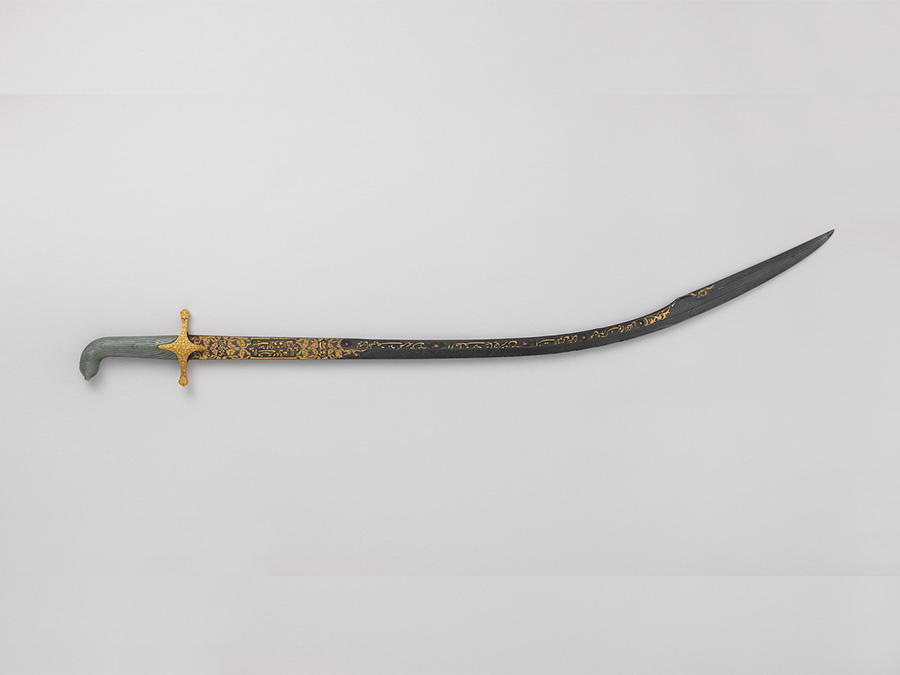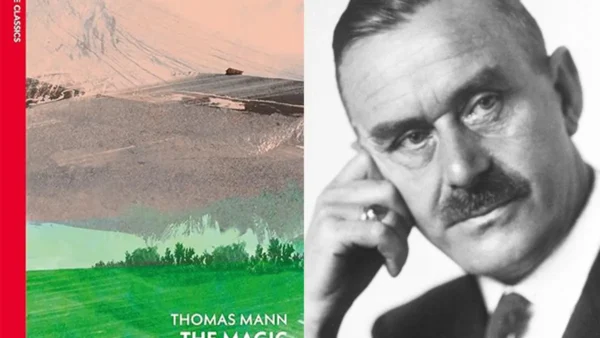With shifting narrators and a big twist at the end, this short story by Jorge Luis Borges tackles themes of violence, vengeance, the clash of theory and practice, and how we judge others.
Unlike some of the fictions we’ve looked at recently in the Borges Marathon, “The Shape of the Sword” is not an imaginative speculation or thought experiment but a traditional story. In fact, it’s a story within a story, and both feature compelling characters and plot.
The frame involves a mysterious Englishman living in a remote town in northern Uruguay, hard-working but notoriously reclusive and secretive. When the narrator of this section asks the Englishman how he got the scar on his face, the man hesitates and then decides to tell him, and we pass to the story within the story, with the “Englishman” (who turns out to be Irish) as the narrator.
We then go back to Ireland in 1922, where the narrator is fighting for Irish independence from Britain. Among his comrades in the battle is a new recruit, a young man called John Vincent Moon.
Moon is a determined revolutionary, steeped in the Communist manuals and a harsh interrogator of military strategy. He has an opinion on everything and pronounces that opinion forcefully:
“The new comrade did not argue, he did not debate—he pronounced judgement, contemptuously and, to a degree, wrathfully.”
But as certain as he is about matters of theory and strategy, he turns out to be a hopeless coward when involved in actual fighting. The narrator has to save him when he freezes in front of a British soldier, and Moon spends the rest of the story exaggerating his injuries to avoid further action, while still pronouncing his verdicts with absolute certainty:
“To show that his physical cowardice was a matter of indifference to him, he made a great display of mental arrogance.”
Finally, with the British closing in, Moon betrays his saviour by turning him in to save his own neck. The theme of betrayal is familiar from other Borges stories like “The Cruel Redeemer Lazarus Morell” and “The Garden of Forking Paths“.
Borges likes to provide a dramatic twist with a few laconic words right at the end of the story. It’s a technique he used in “Man on Pink Corner” among many other examples, and he uses it very effectively in “The Shape of the Sword”.
Note: I’m not worrying about “spoilers” in these reviews of Borges’s fictions, mostly because the stories are very old and I’m more interested in analysing how they work than in preserving the secret of an ending that Borges wrote in 1942. Also, I’m skeptical about how much spoilers really matter. But if you are planning to read the story and don’t want to know the final twist, look away now.
The twist is this: in the final paragraph of the story, we learn that the “Englishman” we met at the beginning is actually the coward, John Vincent Moon. He’s been telling the story in the first person from the perspective of the man he betrayed and who was later executed, while he, Moon, escaped to South America with just the scar on his face.
By choosing to name his story “The Shape of the Sword”, Borges is calling attention to the sword that gives Moon that facial scar. When he finds out he’s been betrayed, the hero grabs it from the wall of the house where they’re staying—it’s one of a set of “scimitars from Nishapur, in whose frozen crescents the wind and violence of battle seemed to be living on.”
The theme of old violence living on inside a weapon is familiar from mythology and will crop up again in a future Borges story, although I can’t remember which one. It’s also significant, I think, that the scimitar is from Nishapur, the scene of a horrifically violent massacre by the Mongol army in which everyone in the town was murdered to avenge the death of Genghis Khan’s son-in-law.
That crescent-shaped scar on his face mirrors the shape of the sword and brings to mind the ways in which violence and vengeance echo through time. It’s a small but significant way to give a greater resonance to the story.
The story has elements of satire in the middle sections, where Moon is almost a caricature of a Communist ideologue who “reduced the history of the world to one sordid economic conflict.” His cowardice contrasts with the certainty of his doctrines, and it’s amusing that he starts by declaring that the revolution is “foreordained to triumph” and then, as things go wrong, begins speaking equally forcefully about the inevitability of defeat.
Perhaps, without the twist at the end, it would have remained a simple condemnation of a coward who betrayed his friend and comrades. But by flipping our allegiances and revealing that the narrator who we’ve been sympathising with throughout the story is actually the villain Moon, Borges complicates things. He forces us to think about the complexity of moral choices, to see ourselves in Moon instead of taking the easy road of condemnation. As the narrator says, “I have told you the story this way so that you would hear it out.” He then asks us to despise him, but now it’s not so easy.




There are 2 comments
So…if you don’t get eleventy-billion comments on THIS story with all the spoilers included at the end (thank you for the warning!) will you revise your theory? heheh S’ok, we can agree to disagree…although I’m not sure we entirely disagree…I think it would be interesting to discuss the ending of Barnes book and it’s super short and it’s made into a film…I think there’s a lot of accessibility there. And who doesn’t love a super-detailed discussion of a book from start-to-stop. But I also think there are other reading experiences that would be disappointing, if one knew how the story developed or which themes emerge as most important along the way, so that you are kinda watching for them, not “discovering” them? Many times I’ve heard that one shouldn’t worry about spoiling the ending of classics either. But I’ve been told “It’s so sad the siblings die at the end” just after I started reading one 19thC novel, and I accidentally saw the end of a film based on a massive doorstopper while I was still reading, and learned the main character is killed by a train in the final scene. And it’s taken me twenty years to forget who is The Suitable Boy in Vikram Seth’s massive novel (I was about 200 pages into that one and simply stopped). I did finish the other two novels…with much grumbling. heheh (Really I can’t believe that you spoiled the end of your own novel in that post’s bio at the bottom…but you also made me LOL.)
Yep, I wrote that post years ago as a kind of provocation, and I know a lot of people are very bothered by spoilers! I can see that in a few cases it would genuinely spoil things, but I think they’re quite rare. I think maybe the difference between our positions is due to a couple of things: 1. I never read book reviews about books I’m currently reading and 2. I have a terrible memory 🙂 So by the time I get to read a book, I have no memory of any spoilers I may have read. But I do agree that it would be annoying to be in the middle of reading a book and to read about the ending. I just think that happens less than we think, and we often limit the effectiveness of book reviews by steering so clear of spoilers. For example, it would have been really hard to discuss this story without mentioning the spoiler. I’ve enjoyed analysing the stories in this series, and the endings are a big part of that. So anyway, thanks for responding to a post I haven’t reread for years – it was good to read it and think about it again 🙂